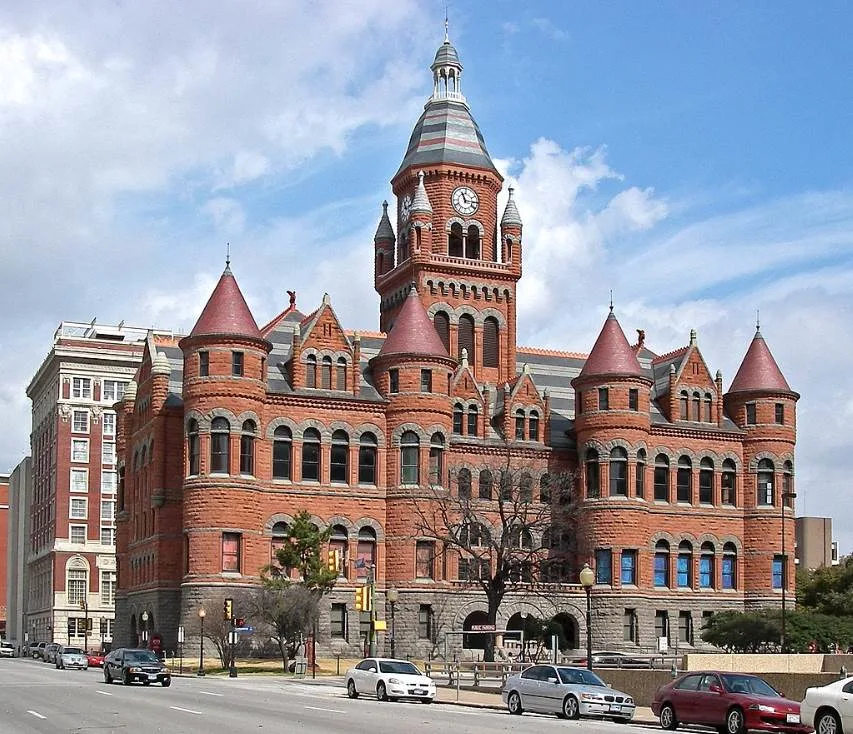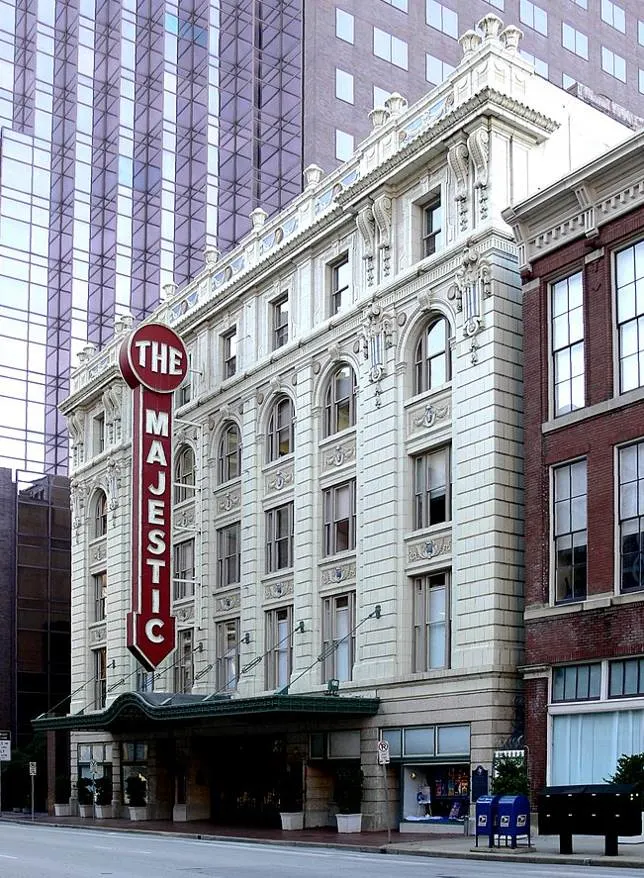Dallas is a large city in the U.S. state of Texas and is part of the 4th-most populous metropolitan area in the country after New York, Los Angeles, and Chicago.
Over 7.5 million people live in the so-called Dallas–Fort Worth metroplex, a large urban area that extends into areas covering 11 different counties.
Both Dallas and the nearby city of Forth Worth were established when railroad tracks were constructed in the area. These lines served the local industry of cotton, cattle, and later oil.
The city was only incorporated on February 2, 1856, and the city exploded in the second half of the 19th century and early 20th century.
Dallas offers a great mix of historic landmark buildings and modern structures, making it one of the most fascinating cities in the country if you enjoy architecture.
Let’s take a closer look at some of the most famous buildings in Dallas, structures that you simply have to see when you visit the city.
1. Reunion Tower
The Reunion Tower is an amazing tower in Dallas that serves as an observation tower. It’s the perfect landmark to discover the city’s amazing skyline because it provides you with an excellent view of downtown Dallas.
The tower was completed in the year 1978 and stands 561 feet (171 meters) tall. It has been one of the best-recognizable landmarks in the city since it was completed. It has been adjoining the equally amazing Hyatt Regency Dallas since 1998.
Official website: Reunion Tower

2. Fountain Place

Fountain Place is without a doubt the most stunning skyscraper in downtown Dallas. This modernist structure stands 720 feet (220 meters), a height that makes it the 5th-tallest building in the city and the 15th-tallest in the U.S. state of Texas.
The building was completed between 1984 and 1986. The original plan was to construct a second tower nearby which would have turned them into twin towers, but this plan was shelved due to financial difficulties.
Official website: Fountain Place

3. Morton H. Meyerson Symphony Center
The Morton H. Meyerson Symphony Center is a magnificent concert hall that is located in the Arts District of downtown Dallas. The building was designed by the Chinese-American architect I. M. Pei (1917-2019), the man who also designed the iconic Louvre Pyramid in Paris.
The concert hall was completed in 1989 and named after Morton Herbert Meyerson, the former CEO of an American computer industry company. The main hall of the building has a capacity of 2,062 seats and is the permanent home of the Dallas Symphony Orchestra and the Dallas Symphony Chorus.
Official website: Dallas Symphony

4. Thanks-Giving Square Chapel
Thanks-Giving Square is an amazing square just north of the Dallas Historic Downtown District. It borders the Thanks-Giving Commercial district in the heart of the city. It was dedicated in the year 1976 and features a picturesque landscaped garden.
The most amazing building on the square is the Chapel of Thanksgiving. This structure stands 90 feet (27.5 meters) and although the spiraling architecture of the building looks rather bleak from the outside, if you decide to enter it you’ll be amazed by the interior’s magnificent design.
Official website: Thanks-Giving

5. Dallas County Courthouse
The Dallas County Courthouse is one of the most fascinating buildings in Dallas for multiple reasons. It was completed in the year 1891 and was constructed with distinctive red sandstone. It’s decorated with rusticated marble elements which give it a unique design in the city.
The architectural design of the building is referred to as the Richardsonian Romanesque style. This is in reference to 19th-century architect Henry Hobson Richardson who introduced Romanesque architecture to North America. Today, the building houses the Old Red Museum which exhibits artifacts related to local history.
Official website: Dallas County Courthouse

6. Texas School Book Depository
The Texas School Book Depository is the former name of a building that is now referred to as the Dallas County Administration Building. The building faces Dealey Plaza, the place where American President John F. Kennedy was assassinated on November 22, 1963.
The alleged gunman, Lee Harvey Oswald, worked at this depository and presumably sot the American president from a window on the sixth floor of the building. The building was completed in 1902 and renovated in 1981 and is now a Texas Historic Landmark.
Official website: Texas School Book Depository

7. Perot Museum of Nature and Science
The Perot Museum of Nature and Science is a major museum of nature and science in Dallas that features exhibits in two buildings. The main building of the museum is located in Victory Park while the second building can be found in Fair Park.
The museum was named in honor of Ross Perot, an entrepreneur, and philanthropist. The magnificent building, which was completed in 2012, resembles a cube and features a glass escalator that extends 150 feet (46 meters) outside this cube-like structure.
Official website: Perot Museum

8. Dallas Municipal Building
The Dallas Municipal Building is a Beaux-Arts building that is located in the Main Street District of downtown Dallas. This monumental structure was constructed between 1913 and 1914 and served as the 4th-city hall building in the city upon completion.
The administrative offices of the city’s government moved to its new location in 1978. The building was used for a variety of purposes since then and was also abandoned for significant periods. It’s one of the main buildings in Dallas that are part of the Harwood Street Historic District.

9. Majestic Theatre
The Majestic Theatre is the last surviving entertainment venue on the so-called Theater Row on Elm Street. This performing arts entertainment venue has 1,704 seats and first opened its doors in 1921 but its future looked bleak after it closed in 1973.
The building was restored to its former glory thanks to the Hoblitzelle Foundation and it reopened once again in 1983. It’s another building that contributes to the Harwood Street Historic District. It’s also a Texas Landmark and was listed on the National Register of Historic Places.
Official website: The Majestic

10. Bank of America Plaza
If there’s one building in Dallas that defines the city skyline, then it’s the Bank of America Plaza. It’s the tallest building in the city with a height of 921 feet (280.7 meters) and is located in the Main Street District in the heart of downtown Dallas.
The building was completed between 1983 and 1985 and is magnificently illuminated at night. The skyscraper is equipped with nearly 2 miles (3 kilometers) of argon lighting that run along the structure’s edges. Originally green, the building can produce light shows in multiple colors today. This makes the tower one of the best-recognizable feats of architecture in Dallas.
Official website: Bank of America Plaza

